News from Atol Solutions
The Village of Dirkshorn
Dirkshorn (West Frisian: Durkshorn), home of Atol Solutions is a town in the Dutch province of North Holland and the region of West-Frisia, I was born in Bovenkarspel and have a long lineage of West Frisian since the 15th century. It is a part of the municipality of Schagen (About Schagen) and lies about 9 km north of Heerhugowaard. In 2001, the town of Dirkshorn had 1051 inhabitants and has not changed much since. The built-up area of the town was 0.31 km², and contained 434 residences.The statistical area "Dirkshorn", which also can include the peripheral parts of the village, as well as the surrounding countryside, has a population of around 1610. Other villages for a nice trip ~ The Villages Valkkoog ~ Eenigenburgh & Callantsoog
The village is known for the rural commune "Het Bedoeninkje", which was located between October 1974 and July 1976. Dirkshorn is like a small community emerged. It makes traditionally been out of the area that eventually the name Haringskarspel. The place name means: the angle (horn) of Dirk. This could be Dirk I (939-988) . This Count obtained several estates that had been in the possession of Count Gerolphe together with the church van Egmond. The town really grows to a village after Harenkarspel a glory which was Dirkshorn belonged. Old spellings for place place Dirxhorn, Dierick and Dirckshorn. Around Dirkshorn were many lakes. Most of these lakes are eventually reclaimed. Thus the Schagerwaard was drained in 1621, Voorpolder and Koetenmeer (Koetenburgpolder) in 1631 and the Forest Lake in 1635.
First Reformed Church stood on the east end of the village and of 1659 with a bell from 1608. The church burned down in 1868 and stood on the spot where now the old town hall stands in 1870. The second church is now behind the town hall from 1868. The organ is also from that time with a pulpit from 1660 of the first church. The text of 1663 signs of schoolmaster and fine painter Gerrit Sydwindt from Dulwich. The pastor first lived in Kerkbuurt but later in Dirkshorn. The New Separated Reformed church on the west end of the village is from 1920. The Catholics of Dirkshorn walked along a footpath through the fields to Kerkbuurt where their church stood. A mill stood on the border Dirkshorn-Stroet.
Also, there are a number of old farms. The community of Dirkshorn locates an artisan Coffee Roasting Mill and Gallery. There is a bank ATM, one super market and a community center which houses a wonderful restaurant.
There is plentiful fishing, a surfing lake, a swimming pool, and the village has three parks. The 18-hole Golfclub Dirkshorn opened on 15 May 2009. Every year there is a street festival held in the village. During the second weekend of September.
Some References
Het Bedoeninkje
The Bedoeninkje in Dirkshorn (Oct. '74 - july '76): 'going to the country' The commune in Dirkshorn - the Bedoeninkje - experienced both high and lows. The project was an educational experiment in the development of phase- and socio homes. The commune existed nearly two years, until July '76, and received a lot of publicity.
Gerolf or Gerulf
(c. 850 – 895/896) was the second count of this name who is attested in the area of Friesland (which also included Holland at the time). Gerolf's main area of power seems to have been in Kennemerland. Count Gerolf is often regarded as the founder of the County of Holland, although the actual name "Holland" is from a later time. His ancestry is unclear, but he may have been a son or, more likely, a grandson of the earlier Gerolf, who was a count in the area of Frisia at the time of the reign of Emperor Louis I the Pious (fl. 833) and who later joined a monastery. The earlier Gerolf died in 855. There is some limited and vague evidence that this earlier Gerolf was a son of a certain Theodoric, who in turn supposedly descended from the Frisian king Redbad (d. 719). Count Gerolf is often identified as the father of Count Dirk I and seen as the founder of the first house of the Counts of Holland, which ruled the county until it was inherited by John II of Hainaut in 1299.
Dirk I or Theoderic
Count of Holland, thought to have been in office from ca. 896 to ca. 928 or 939.
Count in Frisia

The actual title of count Dirk I was 'count in Friesland'. Dirk is thought to be a son of Gerulf II, 'count in Frisia', who is named by some sources as one of the counts who assassinated their Viking overlord Godfryth 'the Sea King' at a place named Herespich (modern Spijk) in 885. Regarding Dirk I, almost nothing is known of his life, a situation further clouded by the present-day hypothesis that he had a son, Dirk (numbered Dirk I bis, to avoid confusion with the already established numbering), who succeeded him instead of the traditional view that he was succeeded by his supposed son Dirk II.
Founding of Egmond Abbey
In 922 Dirk was present at a place called Bladella (present day Bladel, in the extreme south of the Dutch province of Noord Brabant), at which he received certain lands ('at a place called Egmond') from the West Frankish king Charles the Simple. Dirk subsequently erected a nunnery at the said lands, at which nuns prayed continuously for the well-being of the committal dynasty. This was the origin of the later Egmond Abbey.
Under Dirk II the wooden convent was rebuilt in stone to house the relics of Saint Adalbert. Adalbert was not well known at that time, but he was said to have preached Christianity in the immediate surroundings two centuries earlier. The monastery was also changed to house a community of Benedictine monks from Ghent, replacing the nuns. Count Dirk and many of his descendants were buried in the abbey church.
West Frisia
Its exact location is not clearly defined but it has been suggested that West Frisia comprised the area north of an imaginary line through Hoorn and Alkmaar. Within this historical region is the contemporary region of West Frisia, which is a smaller area based on the Westfriese Omringdijk, a dyke system that lay in West Frisian district (gouw) of Westflinge. For Frisia see the Lordship of Frisia for more information.
The area between the rivers Vlie and IJ consists of the present-day municipalities of Alkmaar, Amsterdam (Landelijk Noord), Andijk, Anna Paulowna, Beemster, Bergen, Castricum, Den Helder, Drechterland, Edam-Volendam, Enkhuizen, Graft-De Rijp, Harenkarspel, Heerhugowaard, Heiloo, Hoorn, Landsmeer, Langedijk, Medemblik, Niedorp, Noorder-Koggenland, Purmerend, Obdam, Oostzaan, Opmeer, Schagen, Schermer, Stede Broec, Texel, Uitgeest, Vlieland, Waterland, Wervershoof, Wester-Koggenland, Wieringen, Wieringermeer, Wognum Wormerland, Zaanstad, Zeevang and Zijpe.
The river Vlie (or Fli), an extension of the IJssel branch of the Rhine, divided the northern Netherlands, which at the time was part of Western Frisia, into a western and eastern part. In the eleventh century, after heavy rainfalls, the river flooded and inundated large parts of the land. Not long after, the Zuider Zee bay (previously a lake) was formed, separating West Frisia from the contemporary Province of Friesland. In the Middle Ages, the Westflinge area of West Frisia practically became an island, bordered on the north by the Medem and Zijpe inlets, and to the south by various interconnecting lakes (now polder land) that were connected with the South Sea. Because of this, the toponym "West Frisia" was applied more to the Westflinge area than the original West Frisia.
For about 300 years, West Frisia operated as an autonomous area as the West Frisians did not want to be subjected to authorities from Holland.
Floris V, Count of Holland attempted to unite Holland and West Frisia during his reign, and he succeeded in annexing West Frisia. But it was his successor John I who finally defeated the West Frisians in 1297. However, even though West Frisia formed a united province with Holland in the Dutch Republic, it was recognized a separate region and the parliament of said province, commonly known as Holland, was formally known as the States of Holland and West Frisia, showing that West Frisia was still recognized in its own right.
During the time of the United Provinces, West Frisia had its own independent Admiralty of the Northern Quarter and any admiral serving with that admiralty or the two other Hollandic Admiralty, those of Amsterdam and the Admiralty of the Maze), had the title of Admiral of Holland and West Frisia.
The West Frisian language has disappeared from the regionand the later West Frisian dialects are now slowly disappearing. Although these dialects are subdialects of Hollandic Dutch, they were strongly influenced in vocabulary and grammar by a West Frisian substratum. West Frisia has about 400,000 inhabitant of which 8% speak West Frisian dialect. The traditional dialect of the region is the West Frisian dialect of Hollandic Dutch. The contemporary region is similar in size and location to the historical district (gouw) of Westflinge which itself was a part of a much larger historical region of West Frisia.
Folklore about relation to English and Dutch
A saying, "As milk is to cheese, are English and Fries," describes the observed similarity between Frisian and English. One rhyme that is sometimes used to demonstrate the palpable similarity between Frisian and English is "Rye bread, butter and green cheese is good English and good Fries," which sounds not tremendously different from "Brea, bûter en griene tsiis is goed Ingelsk en goed Frysk."
Another rhyme on this theme, "Bûter, brea en griene tsiis; wa't dat net sizze kin is gjin oprjochte Fries", (in English, "Butter, rye bread and green cheese, whoever can't say that is no genuine Frisian") was used, according to legend, by the 16th century Frisian freedom fighter Pier Gerlofs Donia as a shibboleth that he forced his captives to repeat to distinguish Frisians from Dutch and Low Germans.
Floris V
Count of Holland
Early life
He was the son of Count William II (1227–1256), who was elected King of the Romans of the Holy Roman Empire in 1248, and was slain in 1256 by Frisians when Floris was just two years old. First his uncle (Floris de Voogd from 1256 to 1258), then his aunt (Adelaide of Holland from 1258 to 1263) fought over custody of Holland. At the battle of Reimerswaal on 22 January 1263, Count Otto II, Count of Guelders defeated Aleidis and was chosen regent by the nobles who opposed Aleidis. Otto II served as Floris V's guardian until he was twelve years old (1266) and considered capable of administering Holland himself.[4] Floris’s mother (Elisabeth) continued to reside in Holland after her husband’s death in 1256. She died May 27, 1266 and is buried in Middelburg abbey church. She died in the same year that Count Floris V was declared old enough to rule without guardianship, on July 10, 1266.
Political life
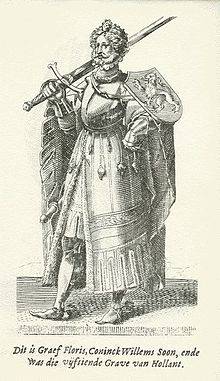 Floris was supported by the count of Hainaut of the house of Avesnes, who was an arch-enemy of the count of Flanders of the house of Dampierre. Floris married Beatrix of Dampierre, the daughter of Guy of Dampierre, count of Flanders, in 1269.
Floris was supported by the count of Hainaut of the house of Avesnes, who was an arch-enemy of the count of Flanders of the house of Dampierre. Floris married Beatrix of Dampierre, the daughter of Guy of Dampierre, count of Flanders, in 1269.
In 1272 he unsuccessfully attacked the Frisians in a first attempt to retrieve the body of his father. In 1274 he faced an uprising by nobles led by the powerful lords Gijsbrecht IV of Amstel, Zweder of Abcoude, Arnoud of Amstel, and Herman VI van Woerden, who held lands on the border with the adjacent bishopric of Utrecht (the area of Amsterdam, Abcoude, IJsselstein, and Woerden) at the expense of the bishop. Gijsbrecht and Herman were supported by the craftsmen of Utrecht, the peasants of Kennemerland (Alkmaar, Haarlem, and surroundings), Waterland (north of Amsterdam) and Amstelland (Amsterdam and surroundings) and the West Frisians. He assisted the weak bishop, John I of Nassau, by making a treaty with the craftsmen. The bishop would become dependent on Hollands support, and eventually added the lands of the rebellious lords to Holland in 1279. He gave concessions to the peasants of Kennemerland. Kennemerland was a duneland, where the farmers had far fewer rights than the farmers in the polders. Floris got rid of the Avesnes influence and switched allegiance to the Dampierres.
In 1282 he again attacked the troublesome Frisians in the north, defeating them at the battle of Vronen, and succeeded in retrieving the body of his father. After a campaign in 1287–1288 he finally defeated the Frisians. In the meantime he had received Zeeland-bewester-Schelde (the area that controls access to the Scheldt river) as a loan from the Holy Roman King in 1287, but the local nobility sided with the count of Flanders who invaded in 1290. Floris arranged a meeting with count Guy of Flanders, but he was taken prisoner in Biervliet and was forced to abandon his claims and then set free. Floris immediately wanted to resume war, but King Edward I of England, who had an interest in access to the great rivers for wool and other English goods, convinced Floris to stop hostilities with Flanders. When in 1292 Floris claimed the throne of Scotland in the Great Cause, (his great-grandmother Ada being the sister of King William I of Scotland) he did not receive the expected support from Edward, but England did support his claims in a new, this time more successful, war on Flanders.
Capture and death
After Edward I moved his trade in wool from Dordrecht in Holland to Mechelen in Brabant, to gain Flanders's support against France, Floris switched sides to France in 1296. Edward I now prohibited all English trade with Holland and conspired with Guy of Flanders to have Floris kidnapped and taken to France. The humiliated lords Gijsbrecht IV of Amstel and Herman of Woerden enter the scene again as part of the conspiracy. Together with Gerard van Velsen they captured Floris during a hunting party and brought him to Muiderslot castle. The news of the capture spread quickly; afraid of the people, four days later the lords together with their captive left the castle to get to a safer place. They were stopped by an angry mob of local peasants. In panic Gerard of Velsen killed the count, and the lords fled. Gerard of Velsen was captured later and killed in Leiden. The other conspirators fled to Brabant, Flanders and perhaps to Prussia, to which many colonists and crusaders from Holland migrated.
Legacy
The life and death of Floris V inspired songs, plays, and books in the Netherlands. Best known is the play "Gijsbrecht van Aemstel" by 17th century playwright and poet Joost van den Vondel, which is about the sacking of Amsterdam in the days after the death of Floris V.
The nickname "God of the Peasants" was introduced after his death in the nobility, and was originally intended to be an insult. He earned the name because he behaved "as if he were the Good Lord himself with his peasants". He apparently knighted 40 peasants as members of the Order of St. James without permission of the church, provoking the anger of the church and of the 12 existing noble members of that knightly order. This story has no historical basis, just like another story that claims that Gerard of Velsen participated in the conspiracy because Floris supposedly raped his wife. What is certain is that Floris was remembered as a saint by the peasants of Holland, and that the "God of the Peasants" became a symbolic hero in the struggle for independence from Spain in the Eighty Years' War (1568–1648).
Family
Floris V was the son of Count William II of Holland and Elisabeth of Brunswick-Lüneburg. In ca 1271 Foris married Beatrice of Flanders, daughter of Guy de Dampierre, count of Flanders and Matilda, heiress of Bethune, Dendermonde, Richebourg and Warneton. Floris and Beatrice had several children including:
John I, Count of Holland, who married Elizabeth, daughter of King Edward I of England. No issue. After John's death Elizabeth returned to England and married Humphrey de Bohun, 4th Earl of Hereford.
Margaret, engaged to Alphonso, Earl of Chester, son of King Edward I of England from 1281 to his death in 1284.
Further children are mentioned in the Chronologia Johannes de Beke, giving a total of eleven children:
Dirk (Theodricum), Floris (Florencium), William (Wilhelmum), Otto (Ottonem), William (Wilhelmum), Floris (Florencium), Beatrice (Beatricem), Mechtild (Machtildim), and Elizabeth
Floris had several illegitimate children.
Art & (West) Frisia
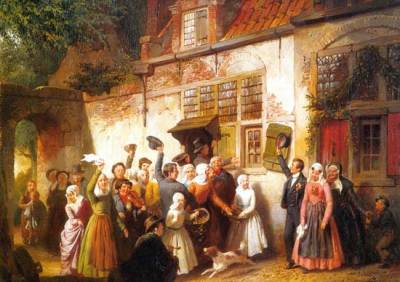
Born in 1816 in Monnikendam Jan Wendel Gerstbauer Zimmermann had great interest in West Frisian clothing and use. In 1855 he painted this wedding scene. Such a party was accompanied by lots of music, singing and dancing, and of course there was a lot of eating and drinking.
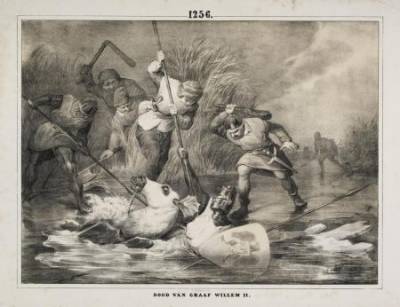
End of January 1256 Count William II raced his horsemen ahead. Before he would travel to be crowned as emperor by the Pope to Rome he would first have the West Frisians submit to his authority. However, this failed dramatically: he collapsed with horse and all through the ice. A group of West Frisian farmers directly hit and killed the lone rider. At that time, they probably did not knew who he was. When they realized who they had killed, they decided to hide the body of the Count. His body received a dishonorable grave, under the stove of a farm in Hoogwoud. The young nobleman left his wife Elisabeth of Brunswick behind, and a son and a half, Floris V.
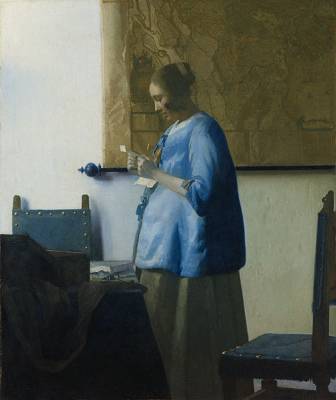
Luminous and exquisitely rendered, Woman in Blue Reading a Letter (about 1663–64) is one of Vermeer's most captivating portrayals of a young woman's private world with Fresia map in the background. Vermeer is one of most celebrated painters of the Golden Age.
Frisia & West Frisia
Click on image for enlargement and description.
When you subscribe to the blog, we will send you an e-mail when there are new updates on the site so you wouldn't miss them.


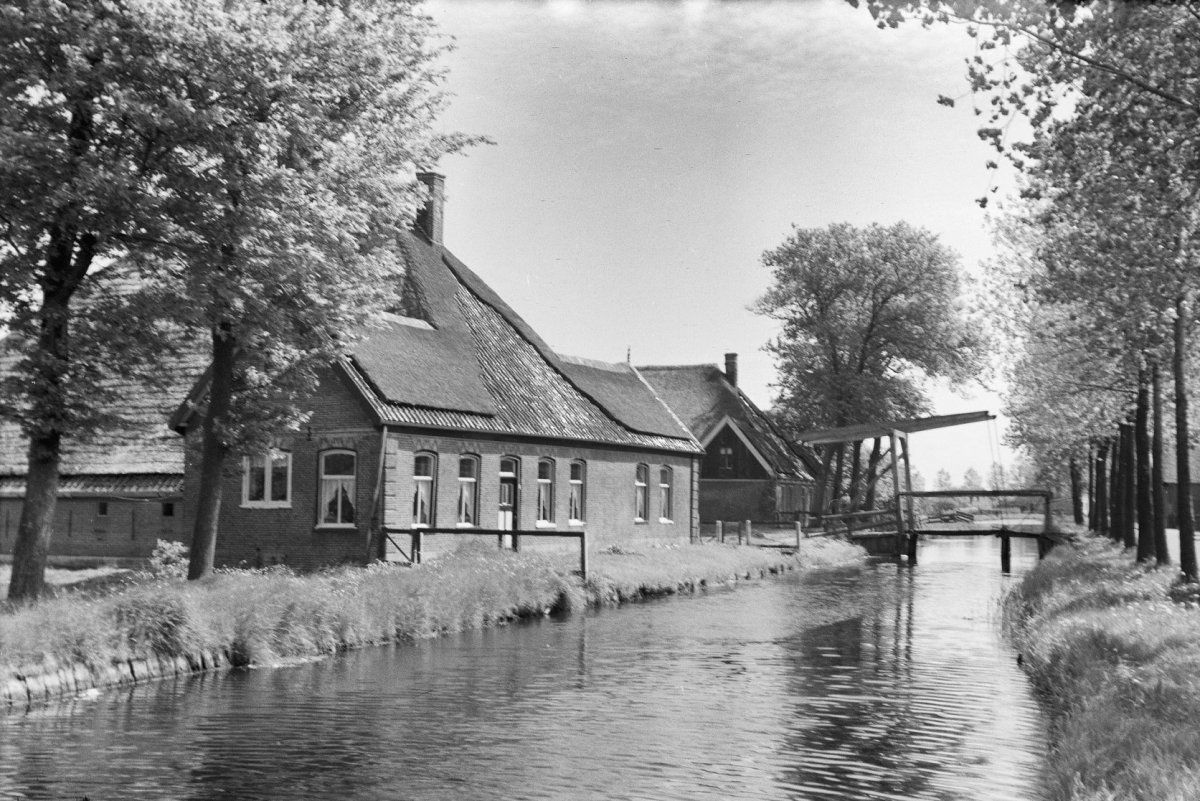
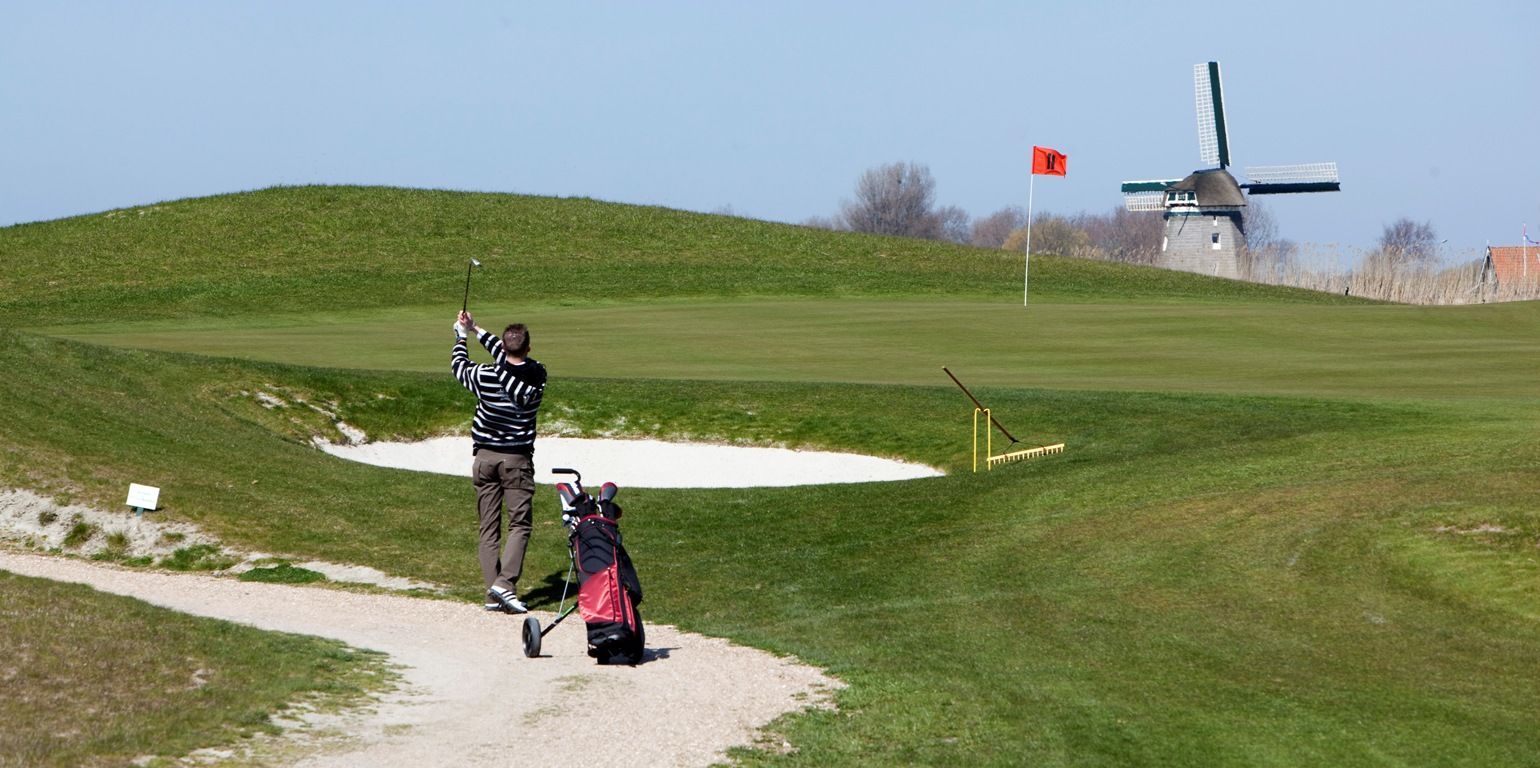
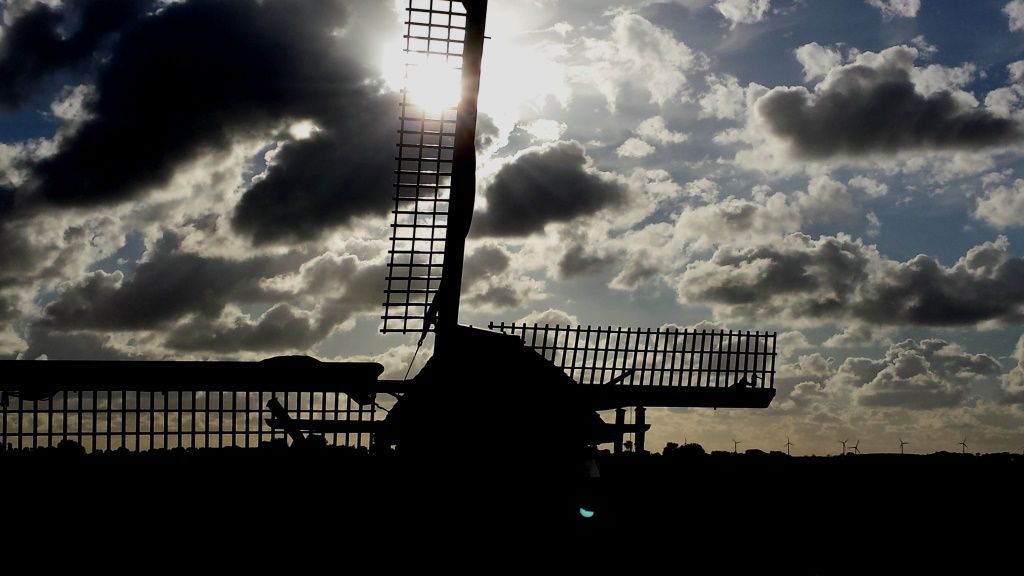

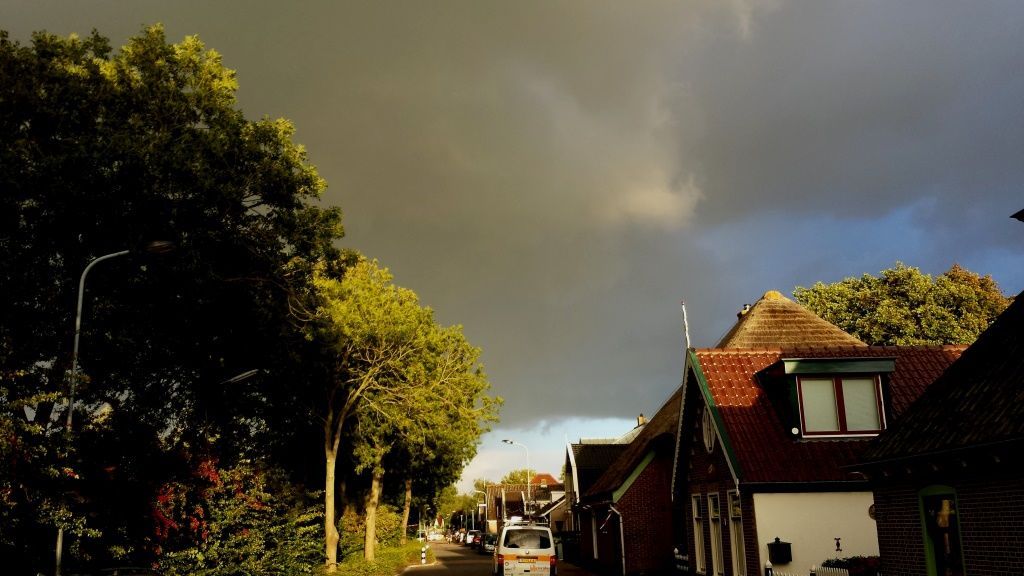
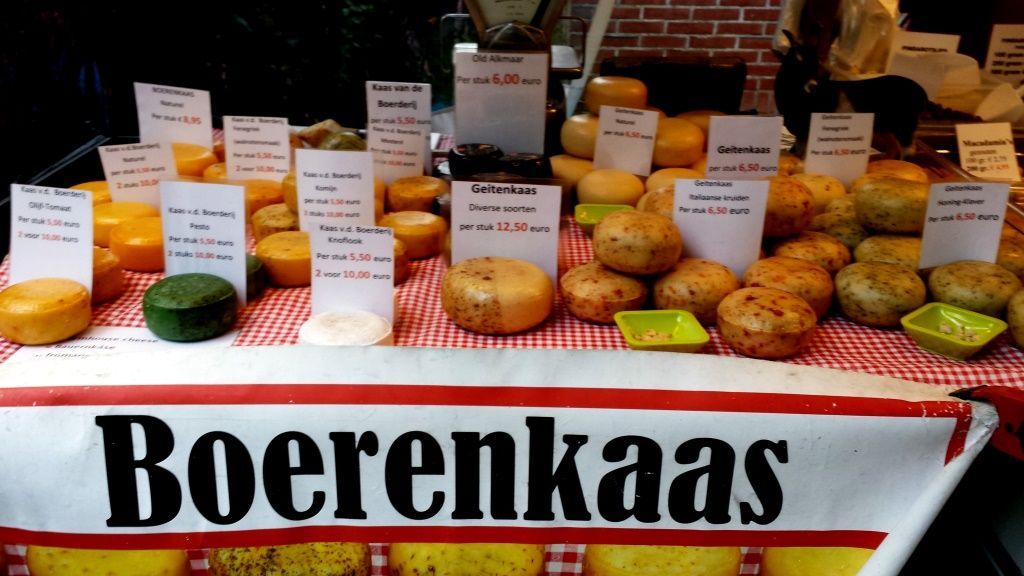
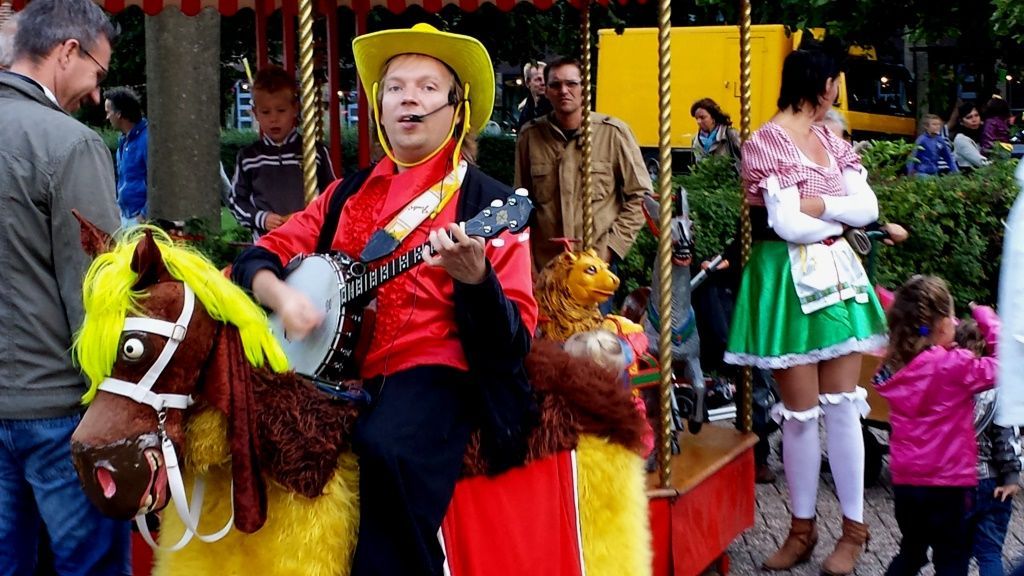
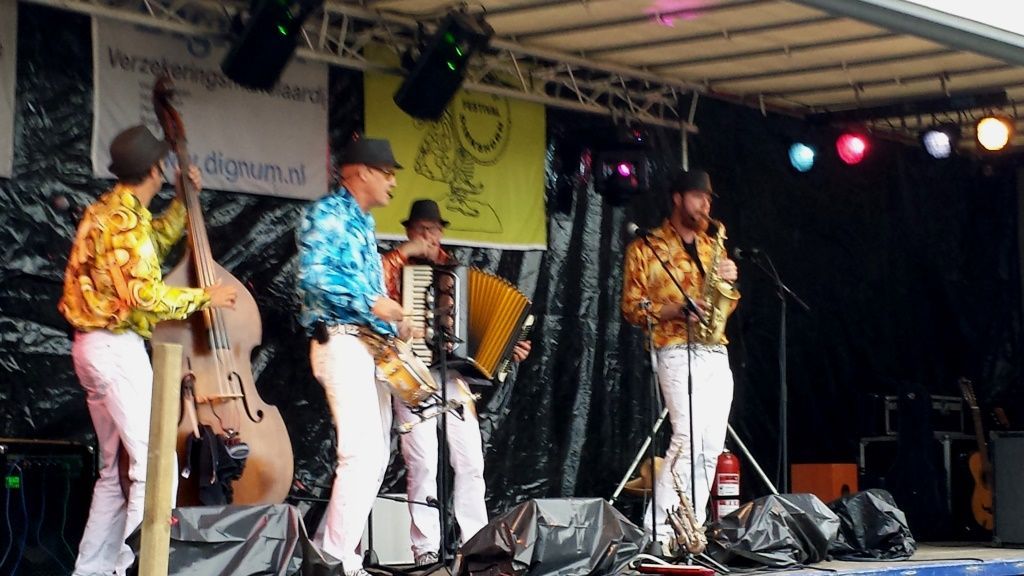
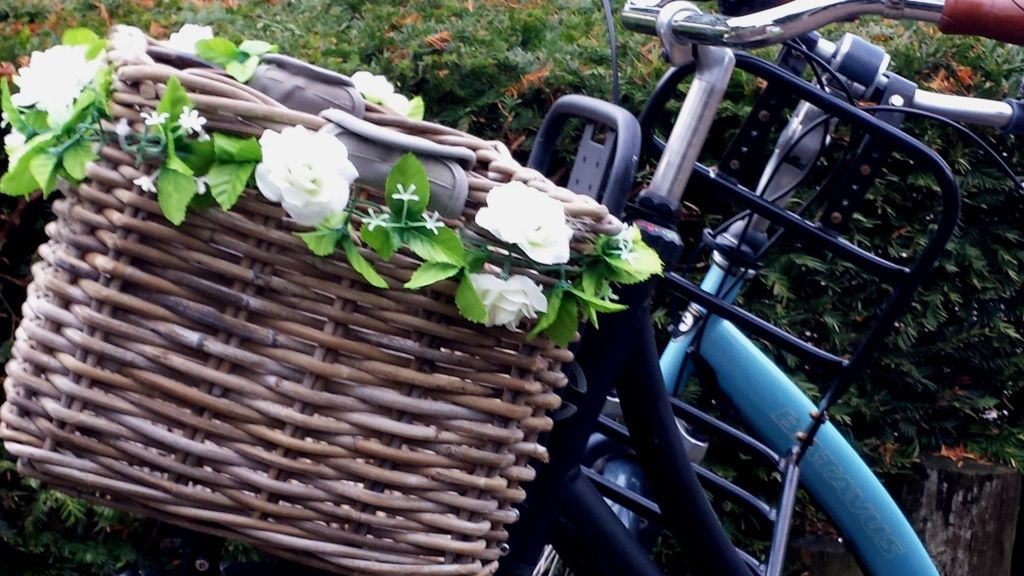
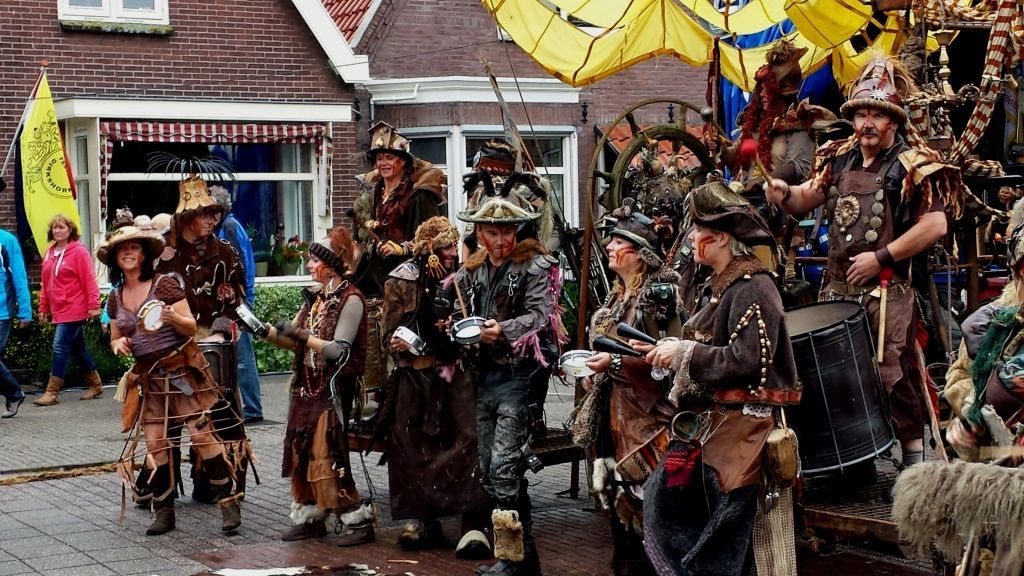

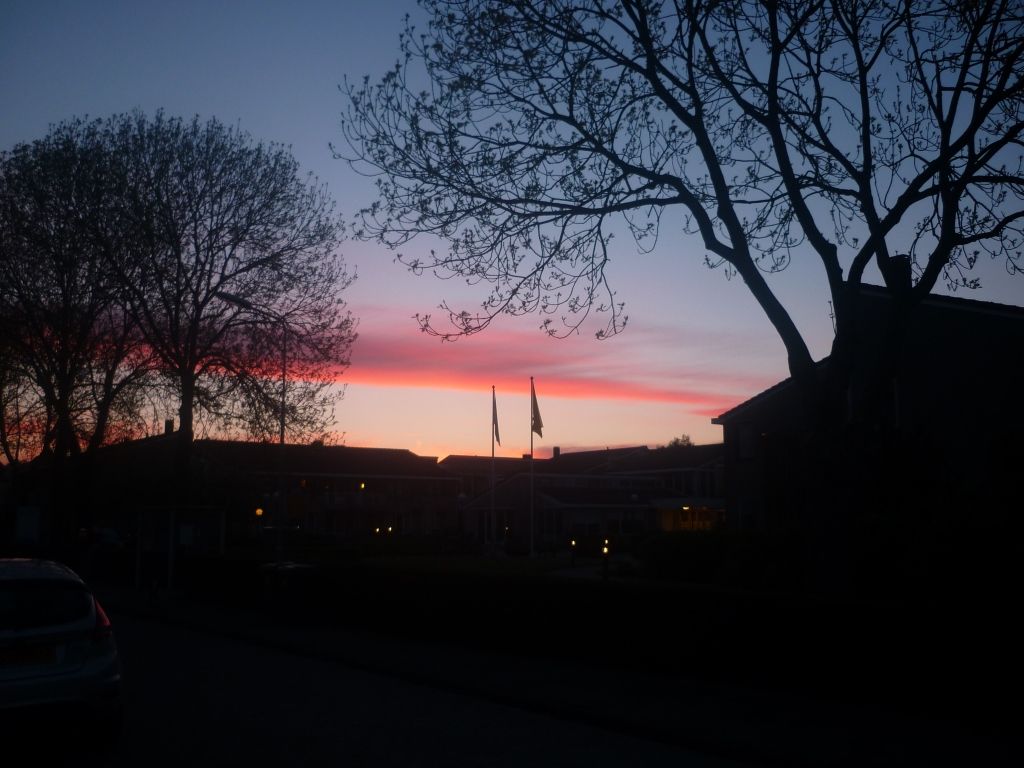
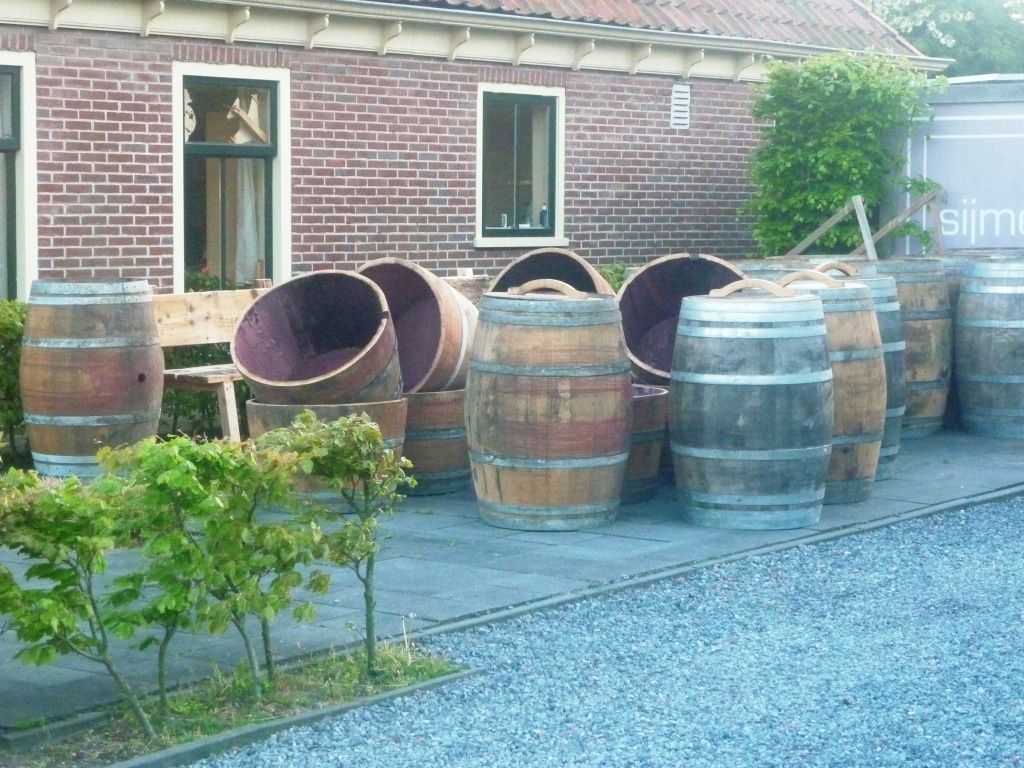
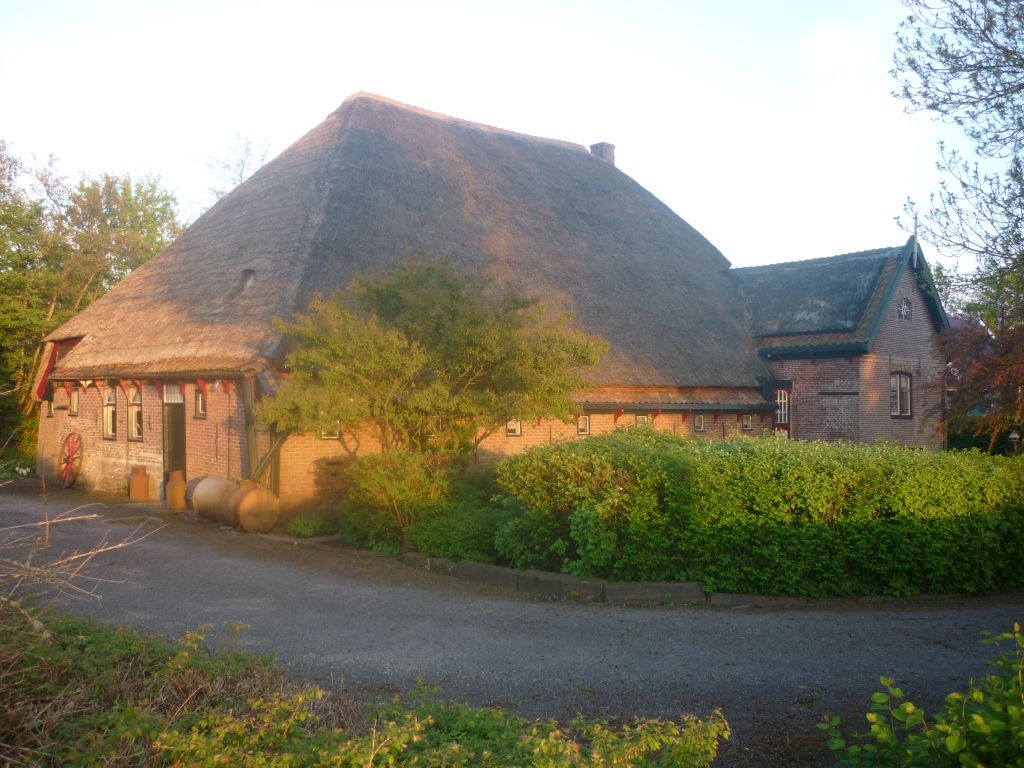
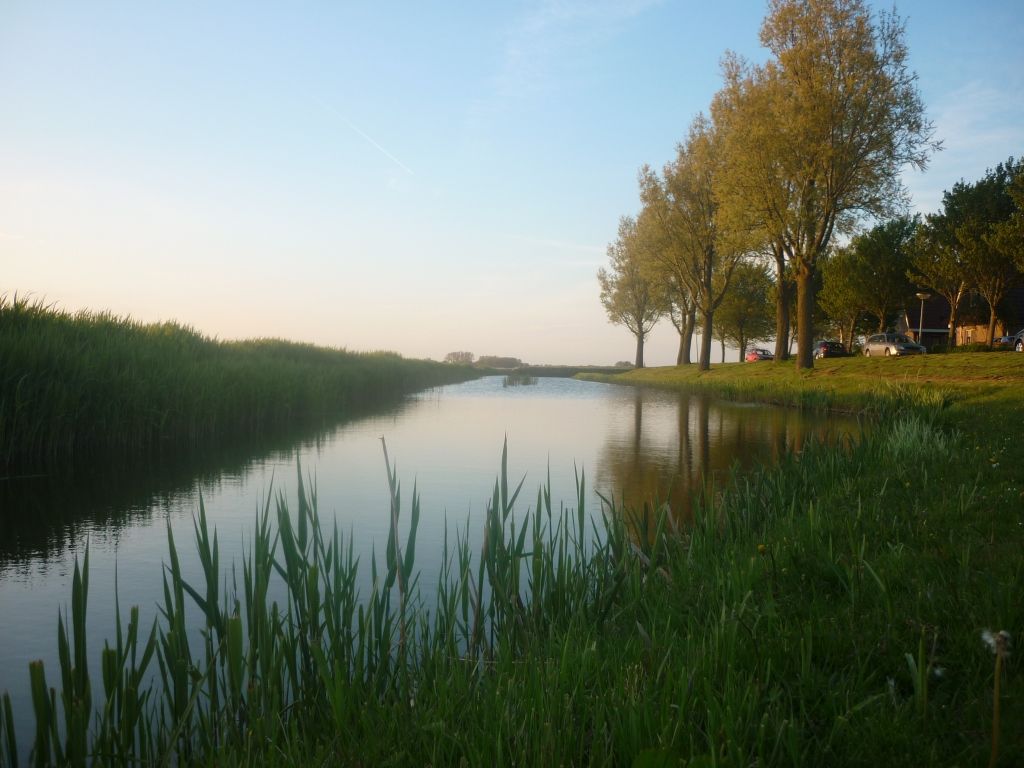
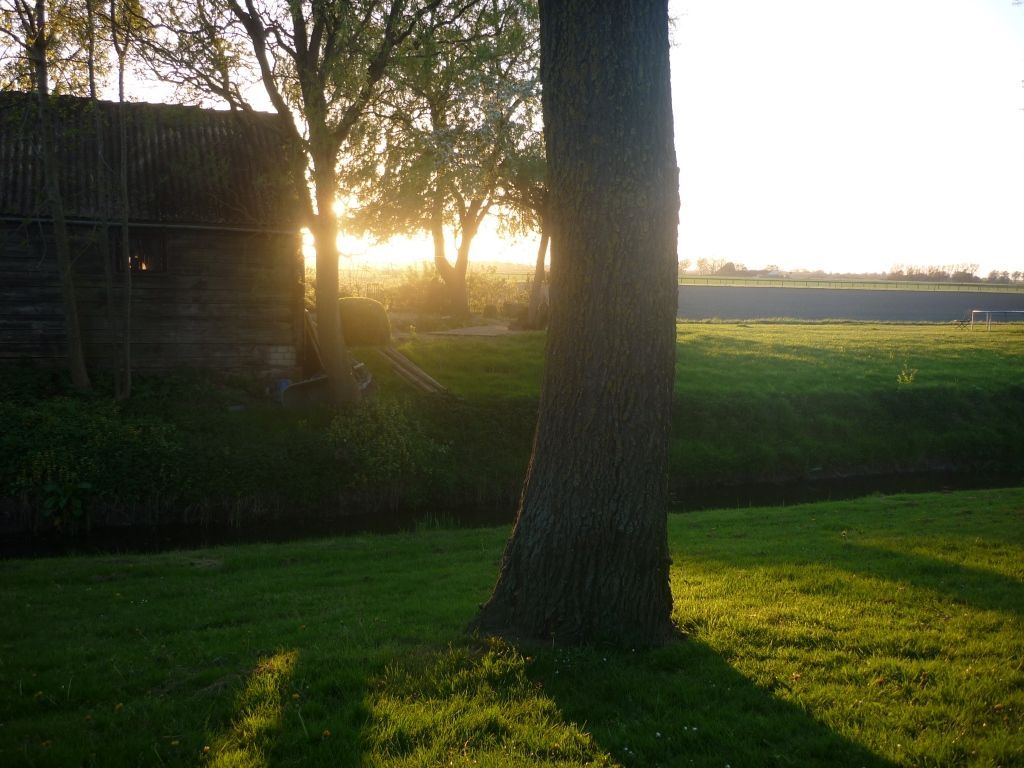
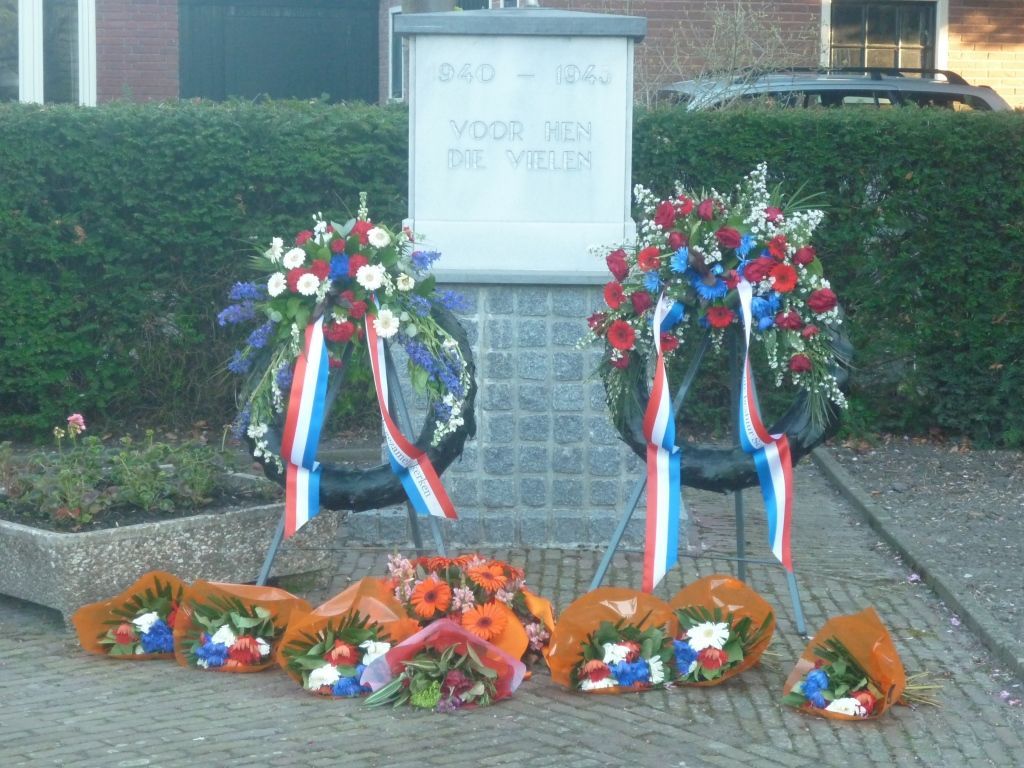
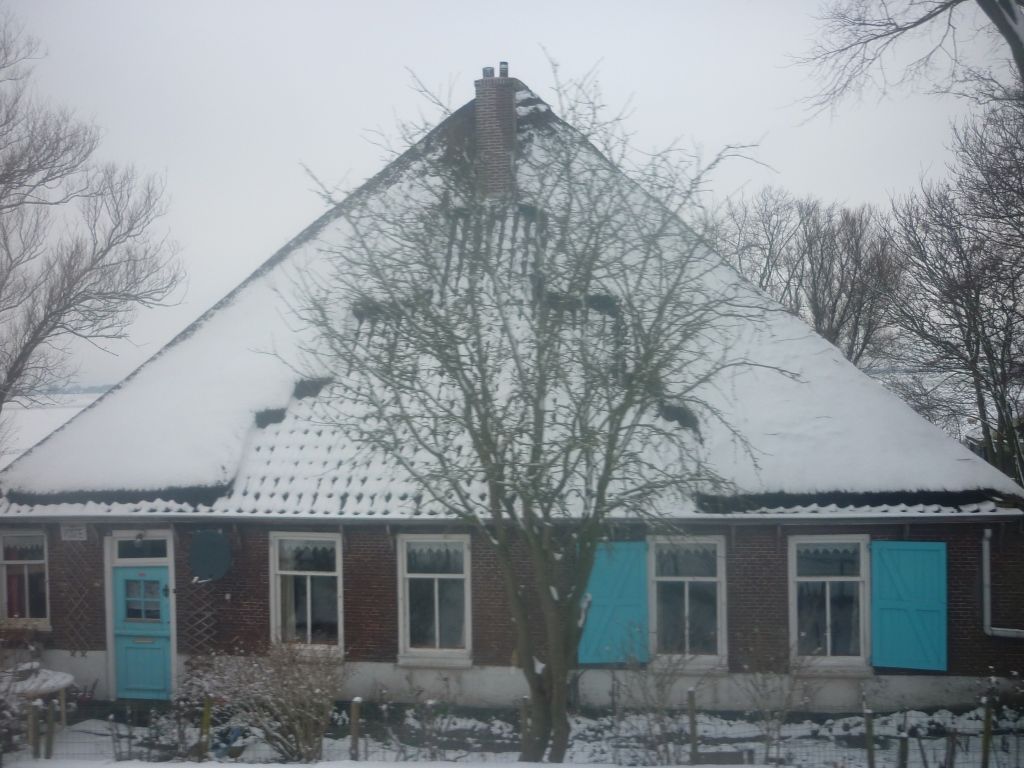
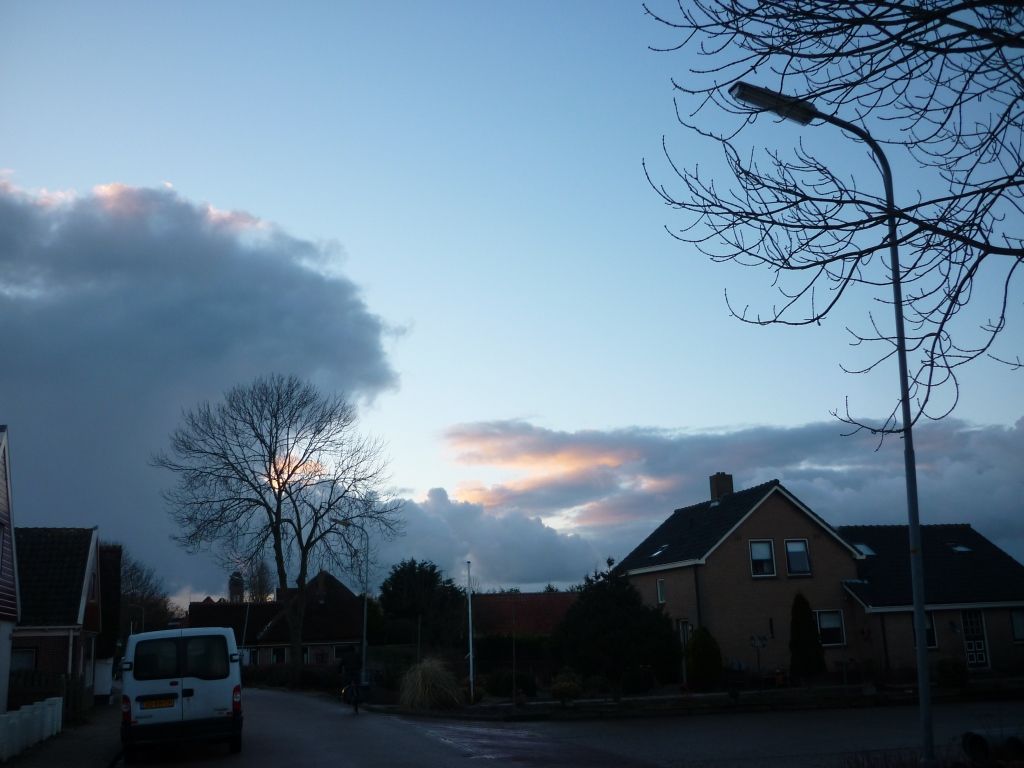
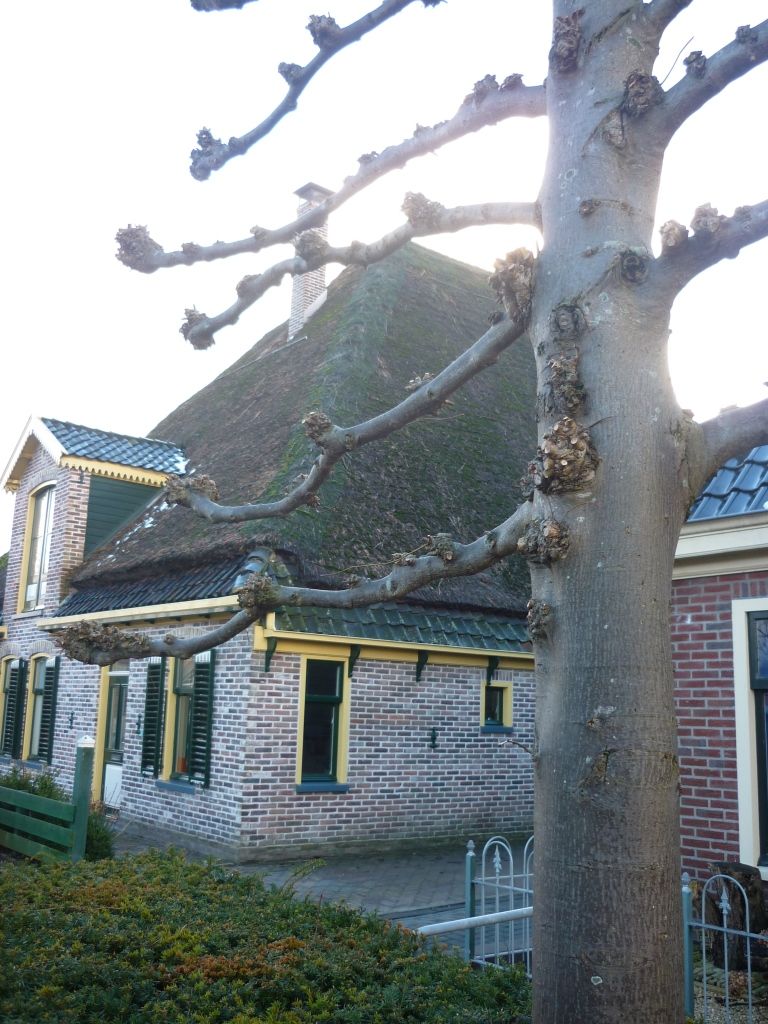

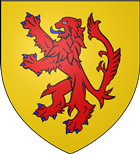
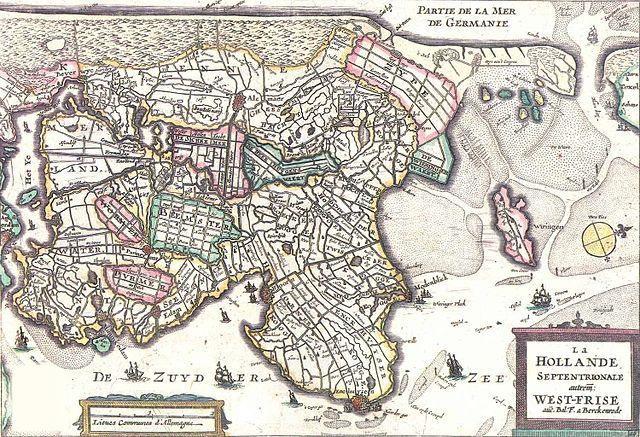
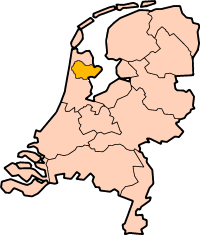
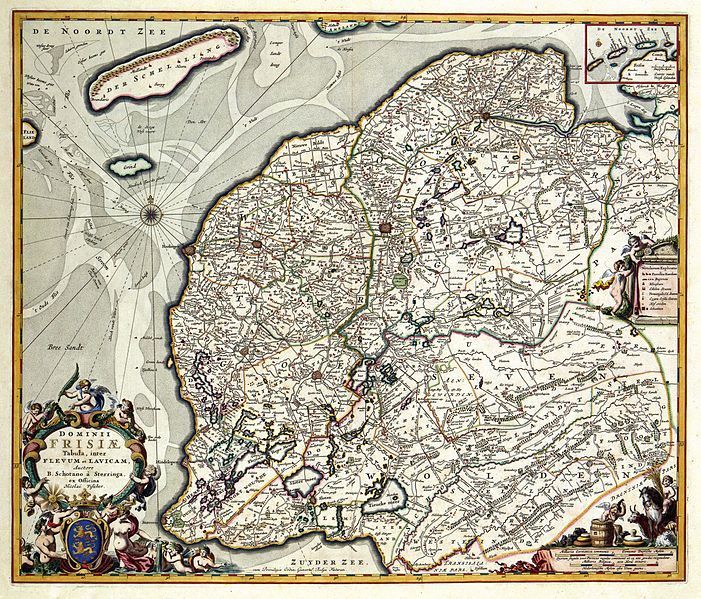
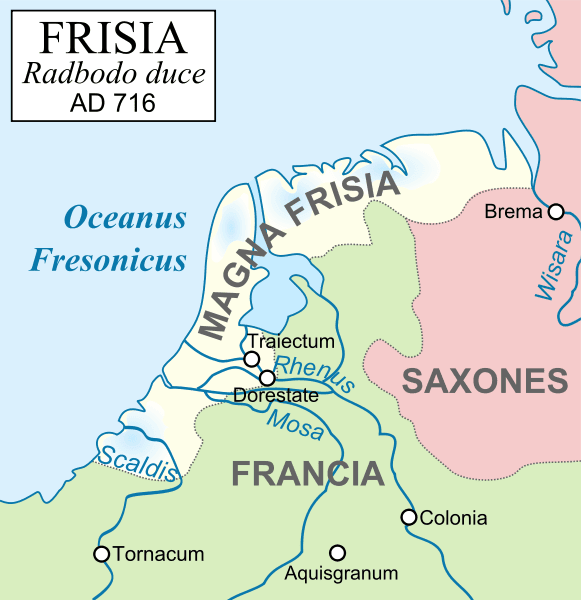
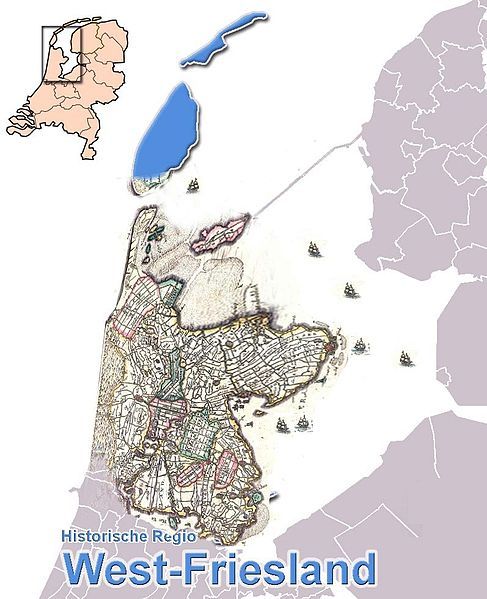
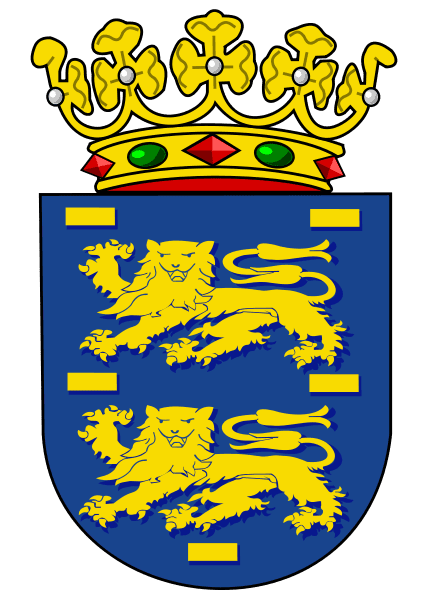
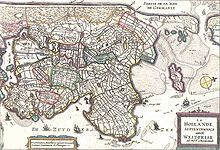
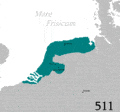
Comments